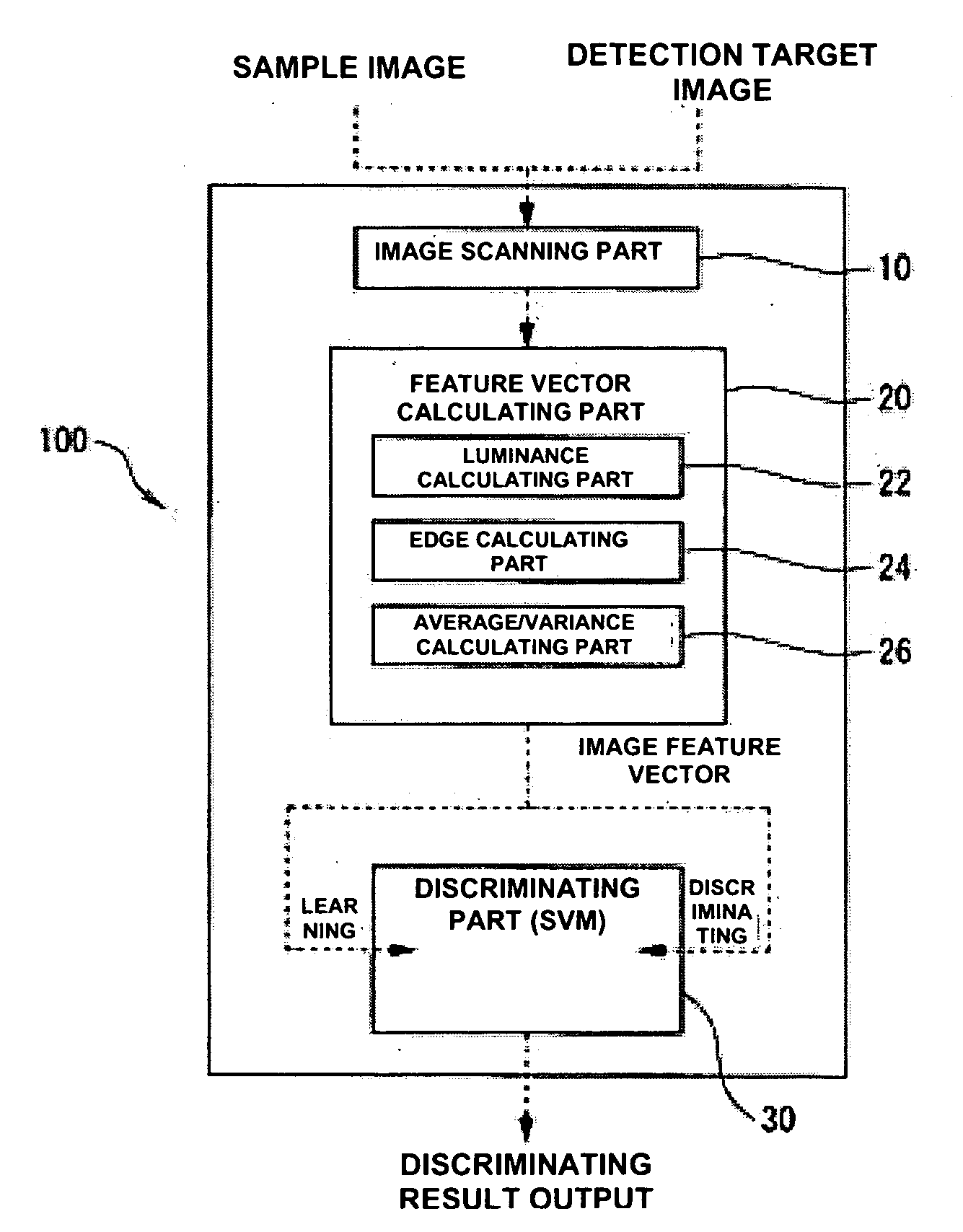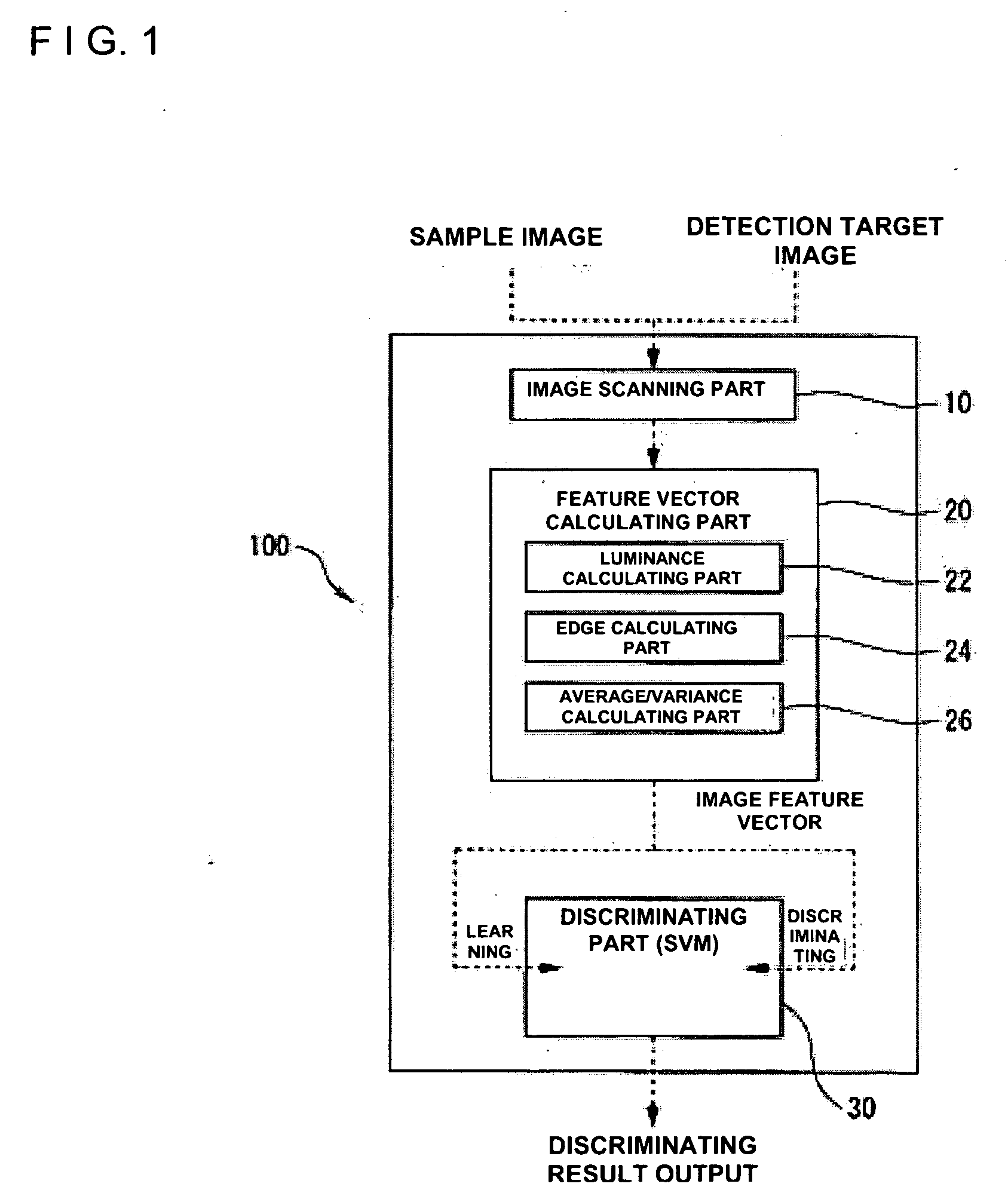Face image detecting method, face image detecting system and face image detecting program
- Summary
- Abstract
- Description
- Claims
- Application Information
AI Technical Summary
Benefits of technology
Problems solved by technology
Method used
Image
Examples
Embodiment Construction
[0056] A best mode for carrying out the invention will be described with reference to drawings.
[0057]FIG. 1 shows one embodiment of a face image detecting system 100 according to the invention.
[0058] As shown in this Figure, the face image detecting system 100 comprises: an image scanning part 10 for scanning a sample face image for learning and a detection target image; a feature vector calculating part 20 for generating a feature vector of the image scanned in the image scanning part 10; a discriminating part 30, an SVM (support vector machine), for discriminating whether the detection target image is a face image candidate area or not from the feature vector generated in the feature vector calculating part 20.
[0059] More specifically, the image scanning part 10 includes the CCD (Charge Coupled Device) of digital still camera and of digital video camera, a camera, a vidicon camera, an image scanner, a drum scanner and so on. There is provided a function of A / D converting a spec...
PUM
 Login to View More
Login to View More Abstract
Description
Claims
Application Information
 Login to View More
Login to View More - R&D
- Intellectual Property
- Life Sciences
- Materials
- Tech Scout
- Unparalleled Data Quality
- Higher Quality Content
- 60% Fewer Hallucinations
Browse by: Latest US Patents, China's latest patents, Technical Efficacy Thesaurus, Application Domain, Technology Topic, Popular Technical Reports.
© 2025 PatSnap. All rights reserved.Legal|Privacy policy|Modern Slavery Act Transparency Statement|Sitemap|About US| Contact US: help@patsnap.com



